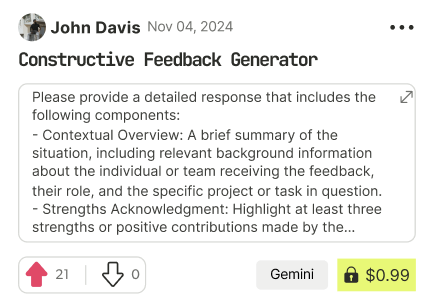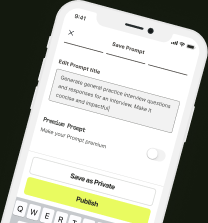prompt mine App
Find, Create & Share AI Magic
Mastering Deep Learning from Scratch to Expertise
Deep learning is a subset of machine learning that involves the use of artificial neural networks to analyze and interpret data. To learn deep learning completely, from the basics to advanced levels, follow this structured approach:
Step 1: Foundations of Deep Learning (0-20)
1. Introduction to Deep Learning: Start with the basics of deep learning, including its definition, history, and applications.
2. Mathematical Prerequisites: Ensure you have a solid grasp of linear algebra, calculus, probability, and statistics.
3. Python Basics: Learn Python, as it's the most commonly used language in deep learning.
4. Introduction to TensorFlow or PyTorch: Familiarize yourself with either TensorFlow or PyTorch, two of the most popular deep learning frameworks.
Step 2: Deep Learning Fundamentals (20-40)
1. Neural Networks: Study the basics of neural networks, including perceptrons, multilayer perceptrons, and backpropagation.
2. Convolutional Neural Networks (CNNs): Learn about CNNs, which are crucial for image and video processing.
3. Recurrent Neural Networks (RNNs): Understand RNNs, including LSTMs and GRUs, used for sequential data like text or speech.
4. Deep Learning Architectures: Explore various deep learning architectures, such as Autoencoders, Generative Adversarial Networks (GANs), and Transformers.
Step 3: Practical Deep Learning (40-60)
1. Hands-on Projects: Implement deep learning models on real-world datasets using TensorFlow or PyTorch.
2. Data Preprocessing: Learn techniques for data preprocessing, including normalization, augmentation, and feature scaling.
3. Model Evaluation: Understand metrics for evaluating deep learning models, such as accuracy, precision, recall, and F1 score.
4. Hyperparameter Tuning: Learn how to tune hyperparameters for better model performance.
Step 4: Advanced Deep Learning (60-80)
1. Transfer Learning: Study how to use pre-trained models for your own datasets.
2. Attention Mechanisms: Learn about attention mechanisms and their applications in deep learning models.
3. Explainability and Interpretability: Understand techniques for explaining and interpreting deep learning models.
4. Adversarial Attacks and Defenses: Learn about adversarial attacks and how to defend against them.
Step 5: Specialized Deep Learning (80-100)
1. Domain-Specific Deep Learning: Dive into deep learning applications in specific domains, such as computer vision, natural language processing, or speech recognition.
2. Advanced Architectures: Explore cutting-edge architectures, including transformers, graph neural networks, and capsule networks.
3. Deep Learning for Unstructured Data: Learn about deep learning techniques for unstructured data, such as text, images, and videos.
4. Ethics and Fairness in Deep Learning: Understand the importance of ethics and fairness in deep learning and how to ensure your models are unbiased.
Example Projects:
- Image Classification: Build a CNN to classify images into different categories.
- Text Generation: Use an RNN or Transformer to generate text based on a given prompt.
- Speech Recognition: Implement a deep learning model to recognize spoken words.
Resources:
- Books: "Deep Learning" by Ian Goodfellow, Yoshua Bengio, and Aaron Courville; "Hands-On Machine Learning with Scikit-Learn, Keras, and TensorFlow" by Aurélien Géron.
- Courses: Stanford CS231n, MIT 6.S191, and DeepLearning.ai on Coursera.
- Communities: Kaggle, GitHub, and Reddit's r/MachineLearning and r/DeepLearning.
By following this structured approach, you'll gain a comprehensive understanding of deep learning, from the basics to advanced topics, and be well-prepared to tackle real-world projects and contribute to the field.
Mastering Deep Learning from Scratch to Expertise

Find Powerful AI Prompts
Discover, create, and customize prompts with different models, from ChatGPT to Gemini in seconds

Simple Yet Powerful
Start with an idea and use expert prompts to bring your vision to life!